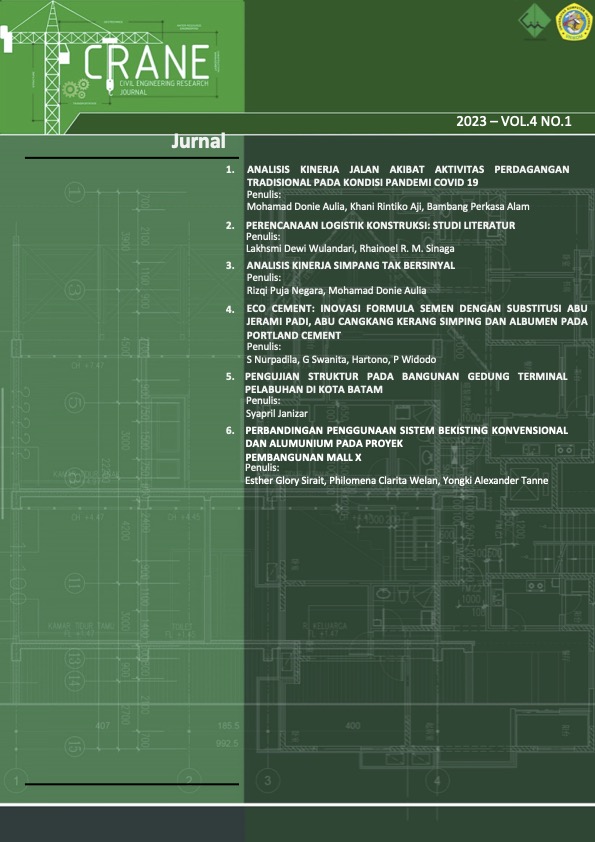PERBANDINGAN PENGGUNAAN SISTEM BEKISTING KONVENSIONAL DAN ALUMINIUM PADA PROYEK PEMBANGUNAN MALL X
DOI:
https://doi.org/10.34010/crane.v4i1.9894Keywords:
Formwork, Aluminium, Conventional Method, Comparative StudyAbstract
Structural building components such as columns, beam and slab require formwork in its construction. Formwork plays an important role in forming the dimensions of the structure to fulfill the design. This study aims to determine the formwork comparison between conventional and aluminum in terms of characteristics, implementation methods and costs. This study compares the characteristics, implementation methods and costs using quantitative and comparative methods. Data on aluminum and conventional formwork were obtained by observing the project site implementation and studying the literature. In the construction of project mall X building, several types of formwork were used, including semi-system formwork (semi peri) and aluminum formwork used for columns and conventional formwork used for beams. That consideration is needed to determine the most efficient formwork in terms of characteristics, method of implementation and costs. The result shows that in project mall X building, aluminum formwork has the same cost as conventional formwork but the process is faster and more efficient than conventional formwork. In addition, aluminum formwork does not produce wood waste and can be reused for 150-200 installation. after the researchers analyzed the installation of the formwork system in the mall X construction project. For the development of further research, it is suggested to make a comparison of project X with other projects, besides that it also makes a comparison of the types of formwork with several variables so that it can consider the use of the type of formwork in terms of construction needs.






